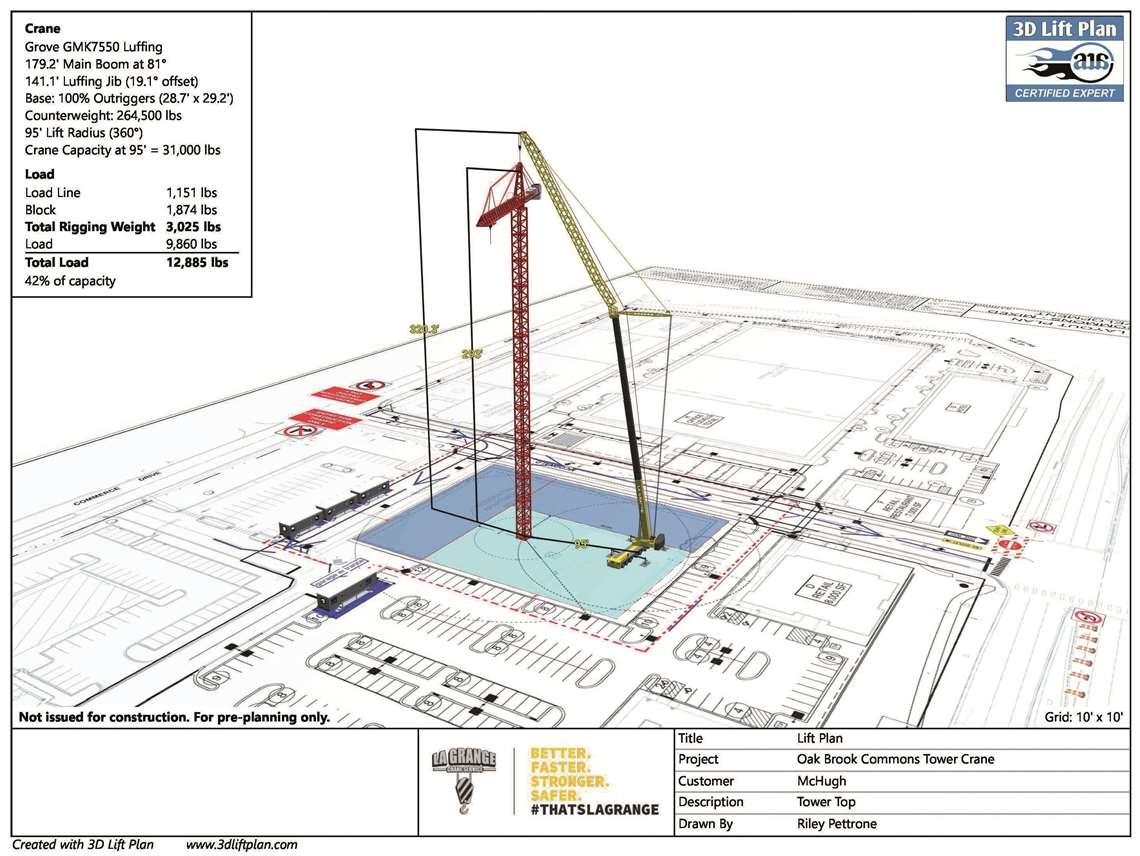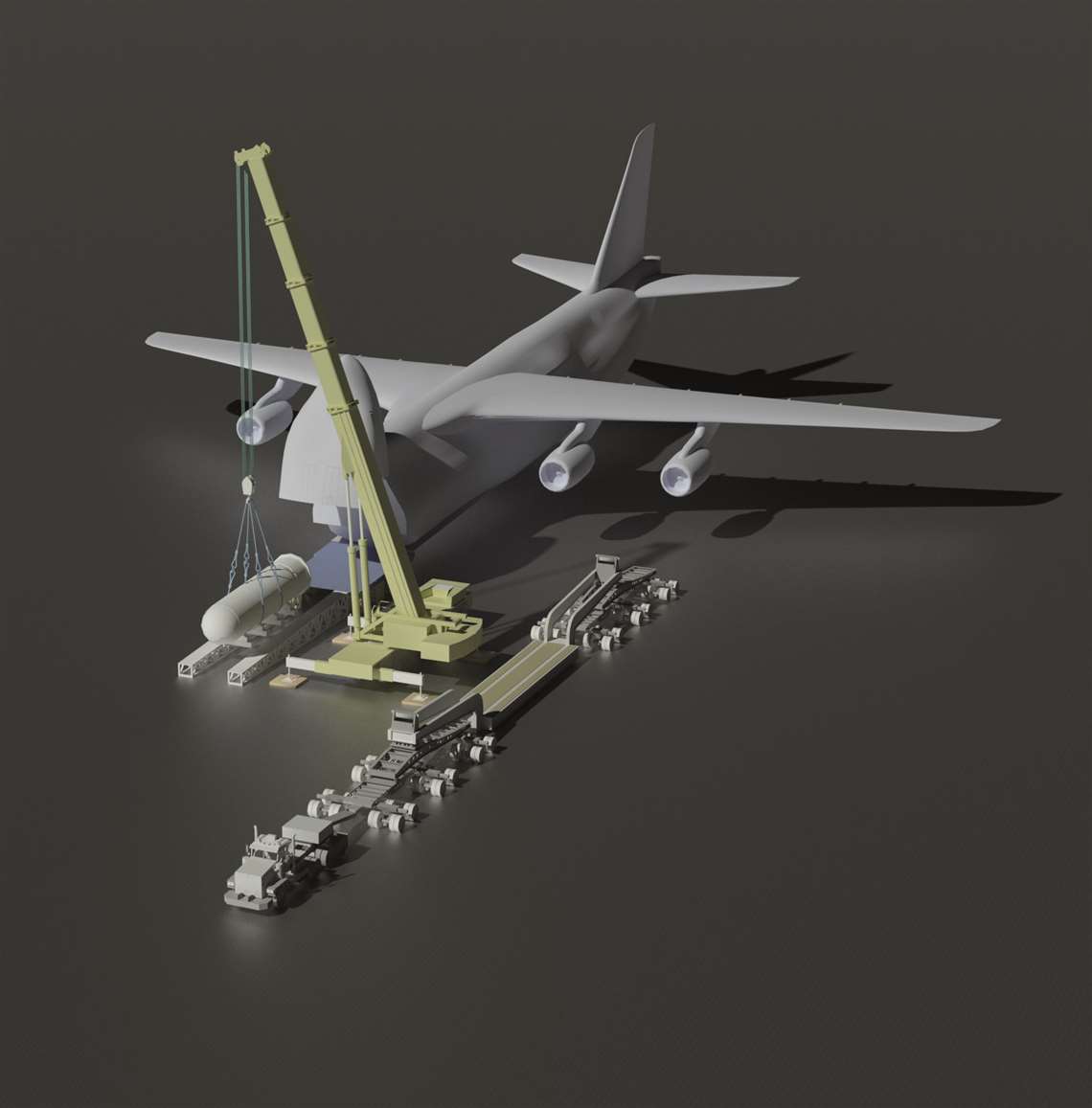Evolution of lift planning software
03 June 2021
Some 25-plus years ago, lift planning software emerged in the crane world.
Lift planning software has changed the way crane companies – large and small – do business. While the advent of lift planning software started in the late 1990s, it has become a legendary tool.
 2021 winners of the 3D Lift Plan software include first place, Riley Pettrone of La Grange Crane Service; second place, Michael Havlicek of Stevenson Crane Service; and third place, Brent Genseke of Area Erectors.
2021 winners of the 3D Lift Plan software include first place, Riley Pettrone of La Grange Crane Service; second place, Michael Havlicek of Stevenson Crane Service; and third place, Brent Genseke of Area Erectors.
The history of lift planning software is an amalgamation of a few people who envisioned a crane (or cranes) making a lift before the actual job took place. Early players were Doug Williams and Earl Johnson III, who founded Compu-Crane. Jim Meehan of Lift Planner and Tawnia Weiss of A1A Software are also pioneers in this young industry.
As crane companies automated and started embracing computer-aided design (CAD) technology, PAT America purchased Compu-Crane. Shortly thereafter, Hirschmann purchased PAT America. Meehan realized that crane lift planning was an idea whose time had come and started Lift Planner in 1996. Working for Compu-Crane, a young Weiss saw the big picture and started A1A Software.
Constant innovation
Today, Weiss’s 3DLift Plan, which was first developed in 2007, is the most widely used lift planning software in North America. Lift Planner, developed in 1996 by Meehan, is another leading lift planning software. Most OEMs support 3DLift Plan and Lift Planner, providing the specs for their cranes. Most of the other lift planning programs available are produced by crane OEMs.
 Lift Planner shows a plan to offload a vessel for a nuclear plant from the Russian Antonov cargo plane.
Lift Planner shows a plan to offload a vessel for a nuclear plant from the Russian Antonov cargo plane.
Some of the world’s most prolific lifts have been planned using these programs. Innovations in lift planning software give crane companies more leverage in planning and executing a project.
A1A Software is on the leading edge of advancements in lift planning using virtual reality (VR). Users can execute a 3D Lift Plan in a VR mode using a VR headset and controls.
“There is no better way to visualize the outcome of a lift than to allow the crane operator and other team members to simulate it in a virtual environment,” Weiss told ACT last year.
“Using LiftPlanner Software allows users to create classic engineering style lift diagrams that look like they took days to prepare in a matter of a minutes or hours,” said Meehan in an article in ACT. “Many of our users regard the professional lift diagrams that they create as a competitive advantage.”
As crane designs advance, lift planning software has to constantly adapt. Features like Liebherr’s VarioBallast and VarioBase, as well as Manitowoc’s VPC Max technology have to be implemented and made easy to use. The challenge is to automate these features and enable users to prepare lift diagrams quickly.
Lift planning software allows crane companies to “visualize success.” Diagrams generated by these programs show every aspect of the lift. Beyond the ability to plan a lift with a specific crane or cranes, lift planning software gives a crane owner the distinct advantage of being able to show its customers how a lift will play out before the cranes arrive on the job, with the precise calculations regarding the weight of the load, the rigging of the crane, rigging gear, ground conditions and other variables at the jobsite. Lift planning software offers a built-in safety component.
The sky is the limit for the future of lift planning software.
STAY CONNECTED


Receive the information you need when you need it through our world-leading magazines, newsletters and daily briefings.




